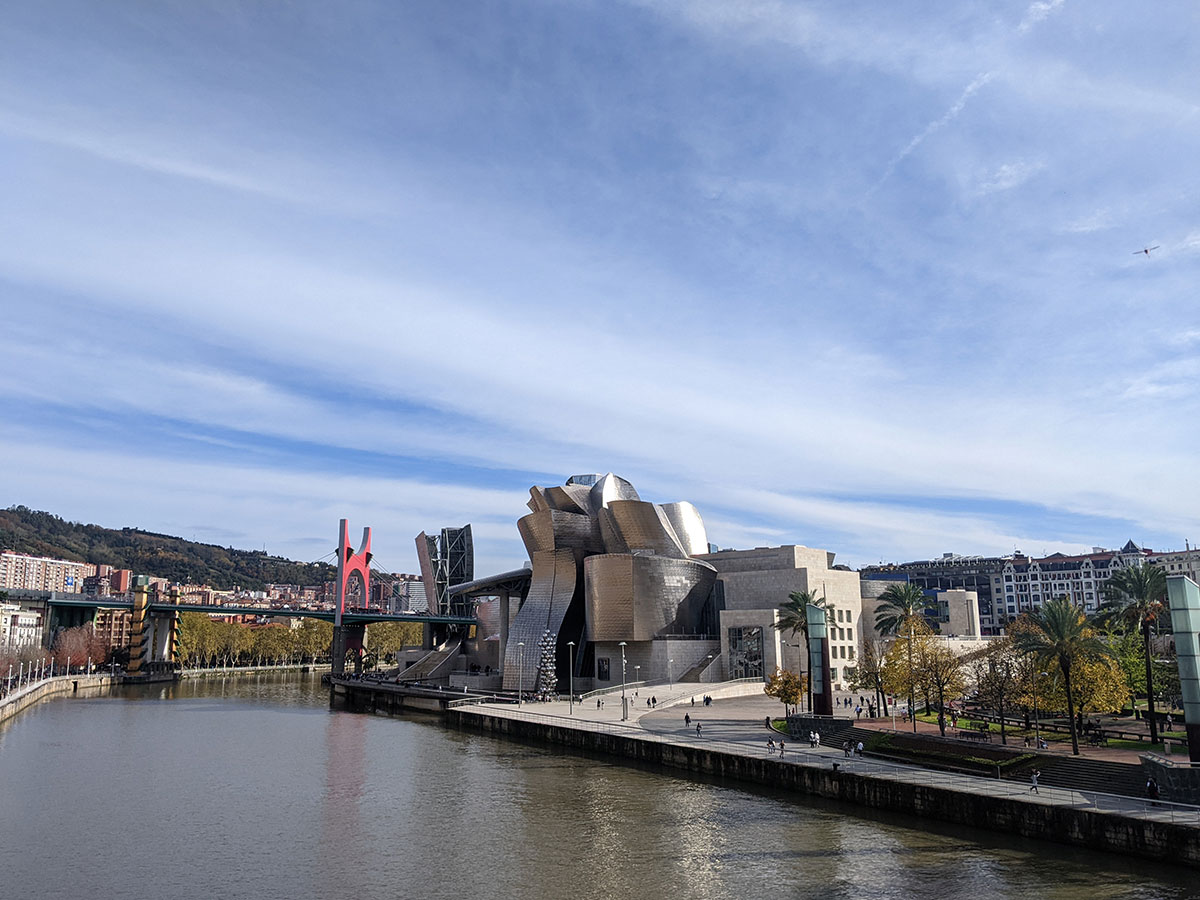Does the perfect 2 or 3 day Bilbao itinerary exist? Well, after a few years living in San Sebastian and visiting Bilbao as much as I can, I’ve given it my best shot!
A vibrant city, there are plenty of things to do in Bilbao, but a well-planned itinerary will help you make the most of your time in the city.
The aim of this guide is to show you how to best spend 24-hours, 48-hours, 72-hours or more in Bilbao, regardless of the time of year you’re planning to visit.
Things to know before spending a day in Bilbao
Before we get into the itinerary, there are a few things worth considering.
1. How many days are enough in Bilbao?
Bilbao is a fairly small, compact city. 2-3 days is enough to explore all of the main attractions in the city.
If you don’t have that much time, don’t worry. You can see the main highlights in 1 day (check out the itinerary below).
Likewise, if you’ve already planned to come for longer, you won’t get bored with plenty of off-piste things to explore and other beautiful places nearby you can visit on a day trip.
2. A well planned itinerary is key
Whilst the city is very walkable, you can rack up the miles on foot if you’re not sure where you’re going or don’t have a clear plan in mind.
Our 1-3 day itinerary options below are designed to keep everything fairly close together so you don’t have to consistently walk from one end of the city to the other.
3. Pick a good base to stay
If you’ve read our guide on where to stay in Bilbao, you’ll know that most of the main attractions are reachable on foot from central barrios (areas).
You can reach the opposite ends of the city in roughly 45 minutes walking. And if you don’t fancy walking all day, the metro and buses offer great, cheap connections throughout the city.
We recommend choosing a hotel in the Indautxu, The Casco Viejo, Ensanche or Matiko. Each area has its own advantages, depending on your personal preferences.
The ultimate Bilbao itinerary
OK, so we’ve built our itinerary based on the number of days in the city.
If you only have 24 hours in the city, then we recommend the “day 1” activities. If you’re here for 48 hours, then you should look to cover day 1 and day 2. Finally, if you’re staying for 72 hours or more, then you can cover all 3 days.
?️ One of the best ways to learn more about Bilbao is to take one of the FREE Walking Tours
Day 1: The Casco Viejo and Guggenheim Museum
After a spot of breakfast (you can check out our guide to the best places for brunch here), we recommend heading straight to the Casco Viejo.
1. El Casco Viejo

Founded over 700 years ago, the Old Quarter of Bilbao was the historical centre of commerce in the city. Today it’s transformed into a pedestrianised area dedicated to hospitality and shopping.
It’s the perfect place to start your trip where you can get lost and admire some of the most historic buildings and monuments in the city.
Places like the Arenal Gardens and Plaza Nueva are a must visit whilst wandering around the Seven Streets of Bilbao (a name the area is also known by).
If you have time and are particularly interested in the fascinating history of the district, I’d recommend taking one of the free walking tours which will reveal the secrets of the Casco Viejo.
2. La Ribera Market
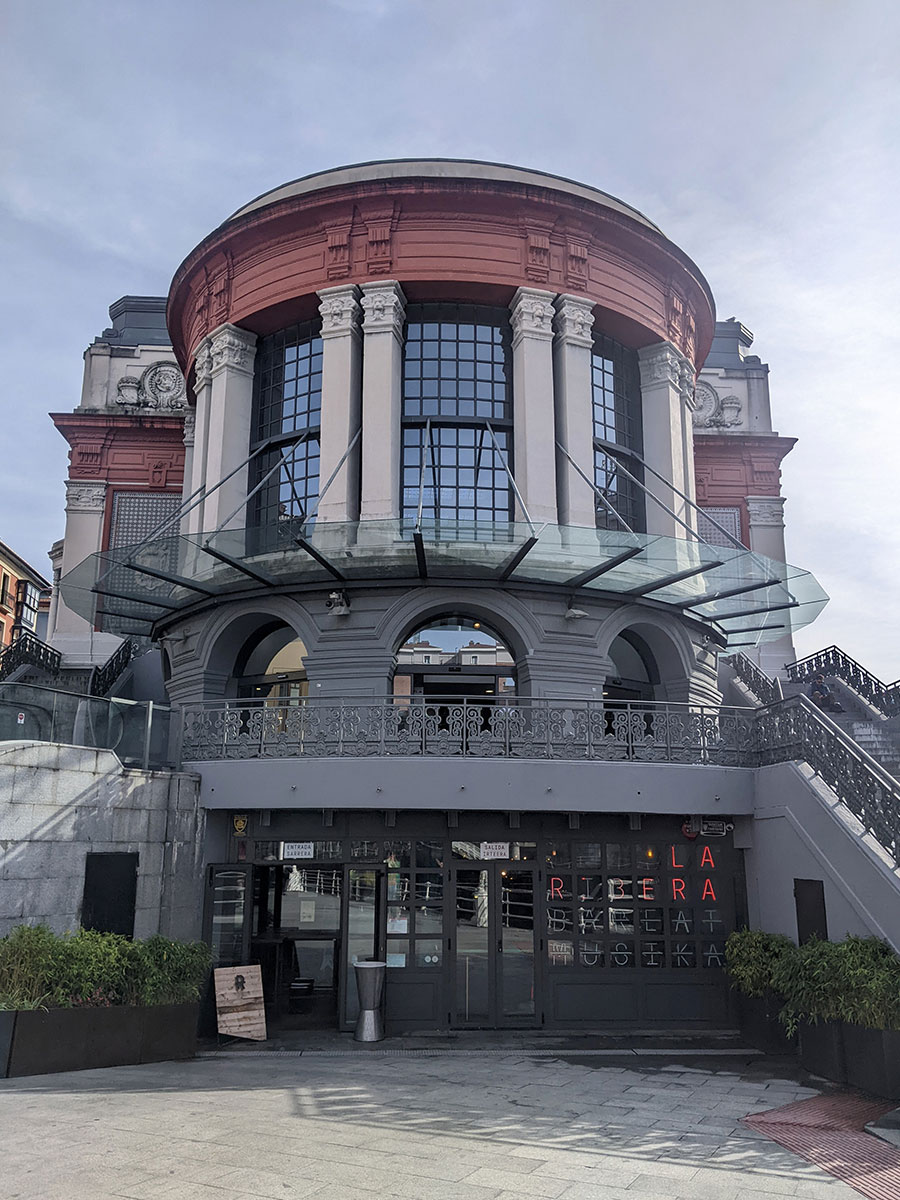
If you do take the free walking tour, you’ll be working up a bit of an appetite, which is perfect as the next stop on our itinerary is La Ribera Market.
The Mercado de la Ribera is not just the largest indoor market in Europe; it has also earned a place in the Guinness Book of Records as the most extensive food market globally!
If this remarkable achievement doesn’t persuade you to pay a visit, it’s hard to say what will.
Perhaps the fact that approximately 60 local merchants have been conducting daily trade here since 1929 will convince you.
In any case, the Ribera Market stands out as one of the top spots to savour authentic Basque cuisine while in the Basque Country.
Aside from the delicious food, the building itself is curious enough to make the trip alone. Set on the River banks, it’s shaped almost like a ship docked at port.
3. Guggenheim Museum
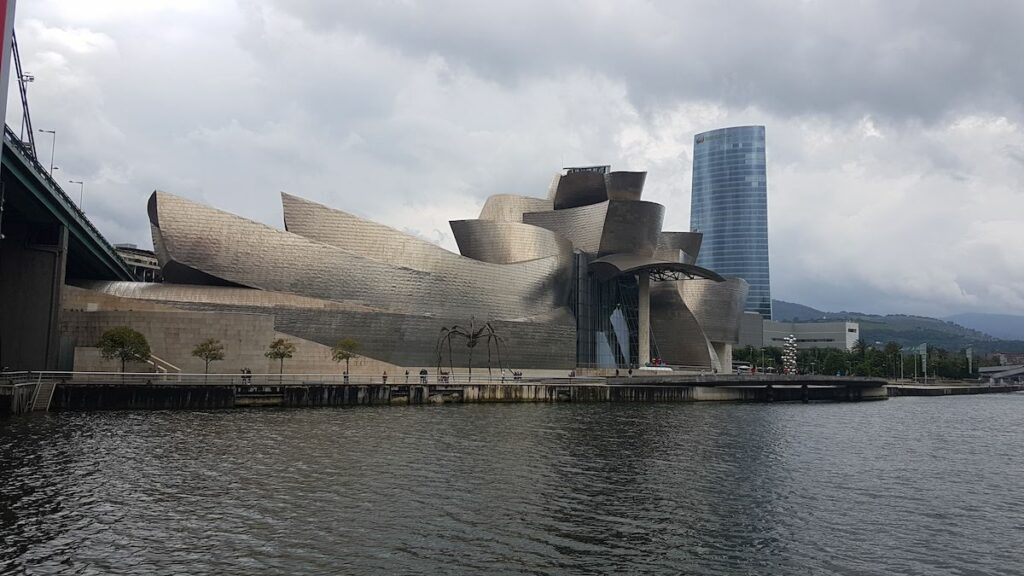
After a spot of lunch, head over to the most famous museum in Bilbao, the Guggenheim.
Welcoming over a million visitors annually, the museum has played a pivotal role in thrusting Bilbao into the international spotlight.
While the interior showcases an array of modern art, the Guggenheim’s crowning jewel is arguably its avant-garde architectural design of the building itself.
It’s set in what was once a neglected zone of the city. But the museum’s construction sparked a rebirth of the area.
The unmissable boat-shaped edifice, constructed from titanium, limestone, and glass, has evolved into Bilbao’s most iconic emblem.
Day 2: El Ensanche, The River Nervion & Pintxos!
Our second day itinerary is all about discovering the beauty of Bilbao – including in the food!
1. Visit the Ensanche Neighbourhood
Bilbao’s Ensanche neighbourhood stands as a hub for commerce, finance, and represents the most cosmopolitan part of the city.
In the latter part of the 19th Century, Bilbao faced the challenge of accommodating its increasing population as it was starting to outgrow the narrow streets of the Casco Viejo.
As a result, the city decided to expand across the river estuary into the Abando area. This led to the emergence of the Ensanche neighbourhood and the contemporary Bilbao we know today.
This district showcases a rich architectural diversity. Perhaps no more so than on Gran Vía, where Baroque, Neo-Gothic, and Basque architectural styles intermingle with modern facades.
We’d recommend spending the morning admiring some of the beautiful buildings and doing a spot of shopping!
2. Stroll the river banks
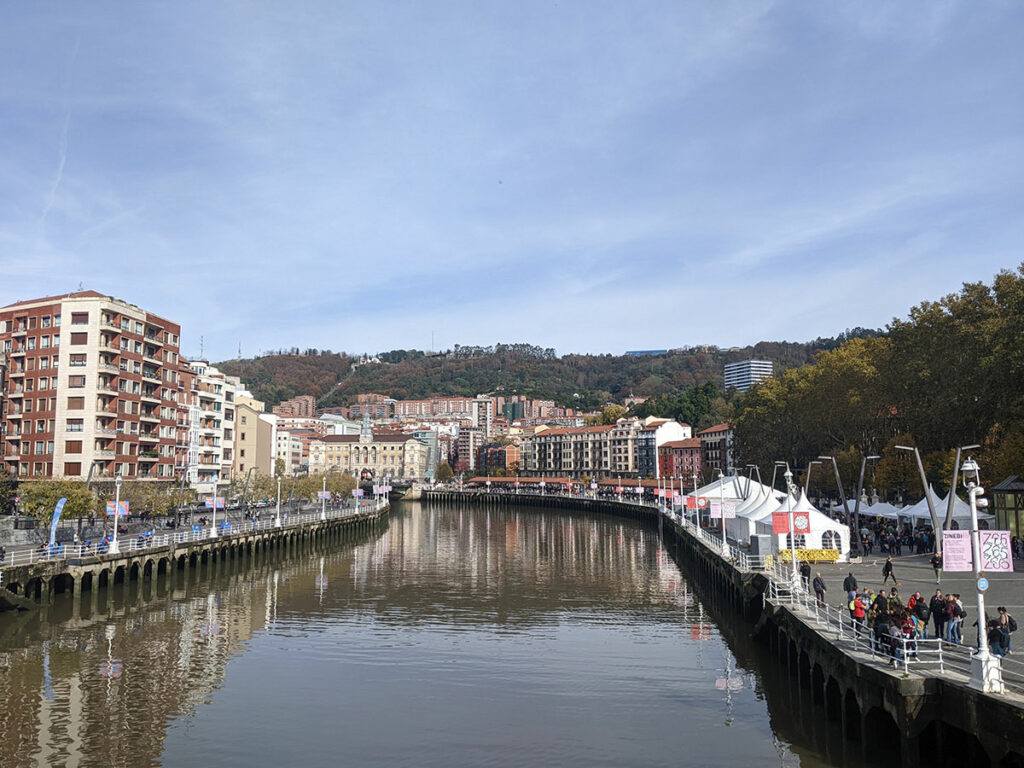
The River Nervión has played an important role in the development of Bilbao.
It runs up from the Bay of Biscay before meandering its way through Bilbao. So, wherever you are in the city, you’re never too far from the water.
Today, the banks of the river have some of the most peaceful green spaces.
Whether you want to sit down and admire some of the views or stroll up and down with an ice cream, it’s the perfect spot for a bit of a time-out.
Along the way, you can admire some of the landmarks such as The Zubizuri Bridge, Arenal Gardens and La Ribera Market.
3. Go on a pintxo bar crawl
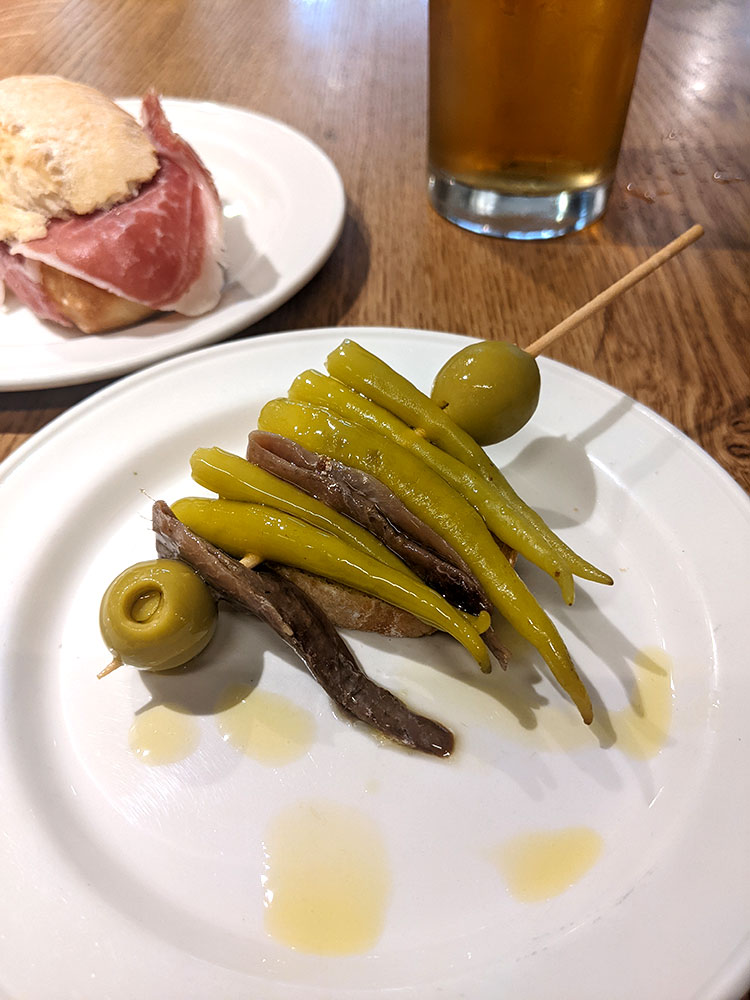
You can’t make the trip to the Basque Country without trying some of the famous pintxos!
Pintxos are the Basque Country’s version of tapas. They are small appetiser-sized portions of food, served in the tavernas (bars). And they are absolutely delicious!
They are served throughout tavernas and restaurants throughout the city of Bilbao.
Each bar usually has a number of specialities. So it’s worth moving from bar to bar, trying some of the favourites in each.
Alongside the Casco Viejo, Calle Ledesma and Calle García Rivero have some of the best spots in the city to try pintxos!
Day 3: Getxo, Sopelana and Museums
For day 3, we move slightly out of the centre of Bilbao to discover some of the areas nearby.
1. Puente de Vizcaya

The first stop is another important monument on the Ría of Bilbao, the Puente de Vizcaya.
It’s a 45 metre high bridge that has been spanning 160 metres in the mouth of the Ibaizabal estuary since 1893.
But it’s the way you cross this river that makes it so special.
It was designed to avoid passing ships below. So instead of walking across the bridge, people (and traffic) are carried across the river in a suspended gondola.
In its day it was a magnificent piece of innovative design and engineering by Basque architect, Alberto de Palacio.
It’s even been celebrated as one of the best examples of hanging transporters having been declared a UNESCO World Heritage site in 2006. A trip across the bridge is a must!
2. Getxo or Sopelana beach
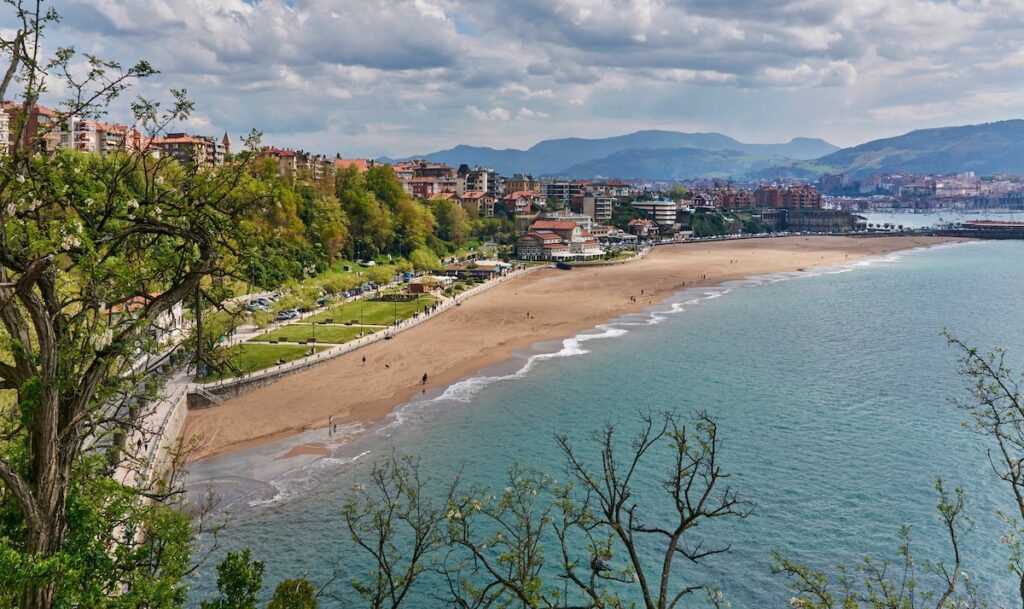
After the dizzying heights of the Vizcaya bridge, it’s time to head back to sea level.
Just a 5 minute walk away, is Las Arenas beach, in Getxo. Here you can enjoy the views out towards the Bay of Biscay from the small beach and promenade.
It’s worth looking the other way too! Grand villas line the promenade, looking out towards the sea – a nod to the rich history of the area.
If you’re hungry it’s not a bad spot for a bit of lunch either, with several restaurants looking out over the Ría with views of the passing boats.
Particularly in the summer (or if the weather is nice), I’d recommend visiting one of the other beaches nearby.
The Bay of Biscay coastline is packed with stunning rock formations, cliffs, amazing surfing conditions and impressive beaches. Each year thousands of tourists come from all over the world to enjoy this amazing natural landscape.
Best of all, a number of the beaches near Bilbao are easily accessible by public transport.
3. Visit one of Bilbao’s Museum
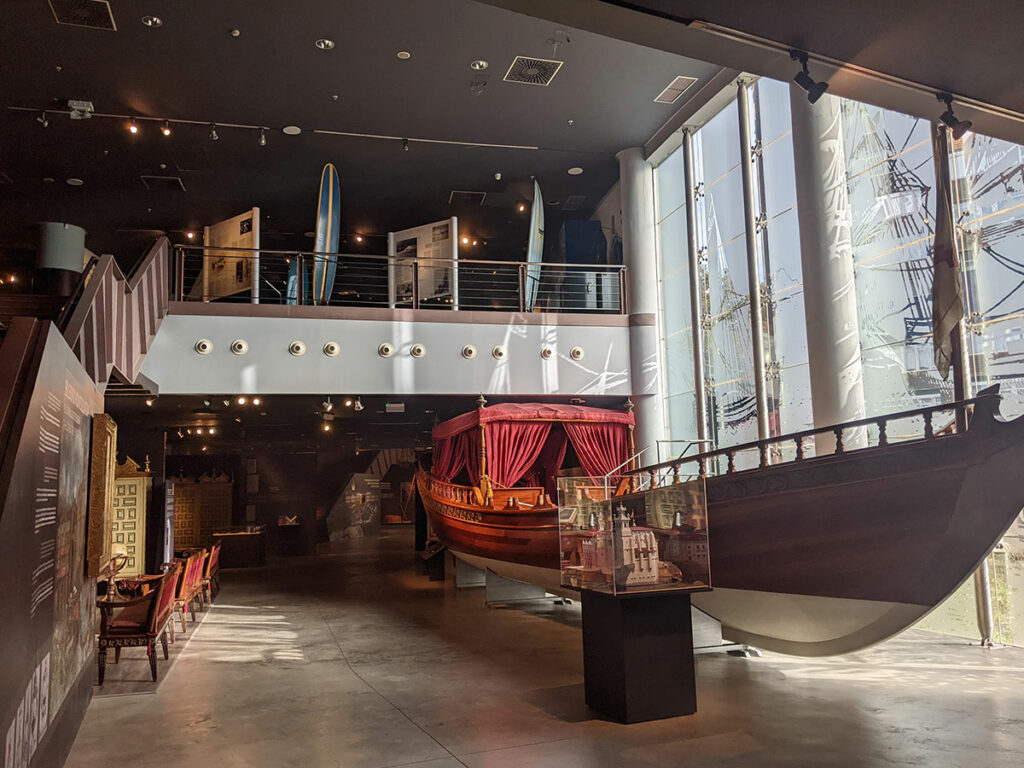
After a morning on the coast, it’s time to head back to the centre.
Visiting one of Bilbao’s museums should be on every itinerary, as there literally is something for everyone!
Museums such as the Bilbao Maritime Museum (Itsamuseum) and Archaeological Museum reveal the fascinating history of Bilbao.
Whilst the Museo de Bellas Artes (Museum of Fine Arts) has developed to become one of the richest Spanish museums outside of Madrid.
It features works from the likes of Goya, sculptures from names such as Chillida and more contemporary pieces by the likes of Barceló.
If you’re more of a sports fan, you can head to the Athletic Club Bilbao Museum at the San Mames Stadium to learn about Bilbao’s unique football team that has gained a worldwide reputation.
Whatever your passion, you’re bound to find something that peaks your interest.
FAQs about Bilbao Itineraries
In the section below, we’ve responded to the most FAQs that we haven’t covered in our itinerary.
If you have a question that we haven’t tackled, ask away in the comments section below and we’ll get back to you!
Bilbao is 100% worth visiting. It’s arguably one of Spain’s most underrated cities, with world-famous museums, a fascinating Basque culture, incredible food and much more.
Best of all, it’s walkable, safe and has really good international connections thanks to Bilbao Airport.
